At long last, a yellow flowered toad lily (Tricyrtis flava, below) has been procured of sufficient sturdiness and vigor that there are high hopes for its survival. While there is no reason that yellow flowered toad lilies should be more fragile than others, prior plantings have been skimpy specimens purchased by mail order, and with my penchant for neglect all perished in the first spell of dry weather. Admittedly, I was also not careful with placement, with toad lilies planted in ground that was possibly too damp, maybe too dry, or shaded.
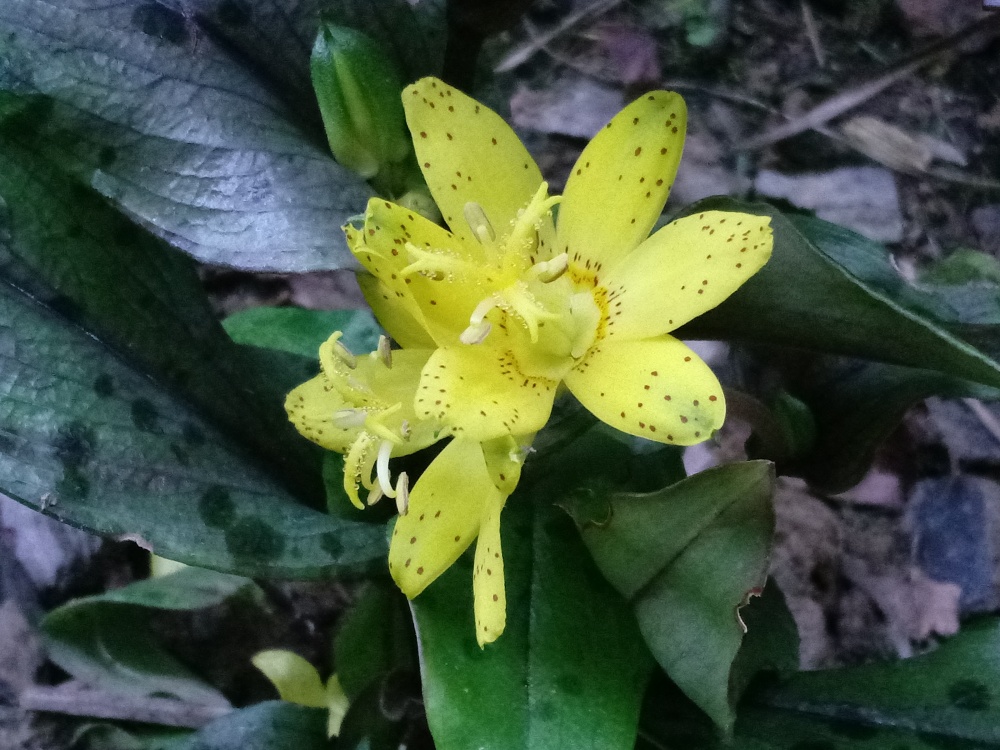
While references recommend shade, other toad lilies in the garden perform best with only the slightest shade from the afternoon sun. Ones planted in more shade struggle, and that’s what’s happened with the yellow flowered toad lilies I’ve planted. Struggle for a year, if they made it that long, then disappear.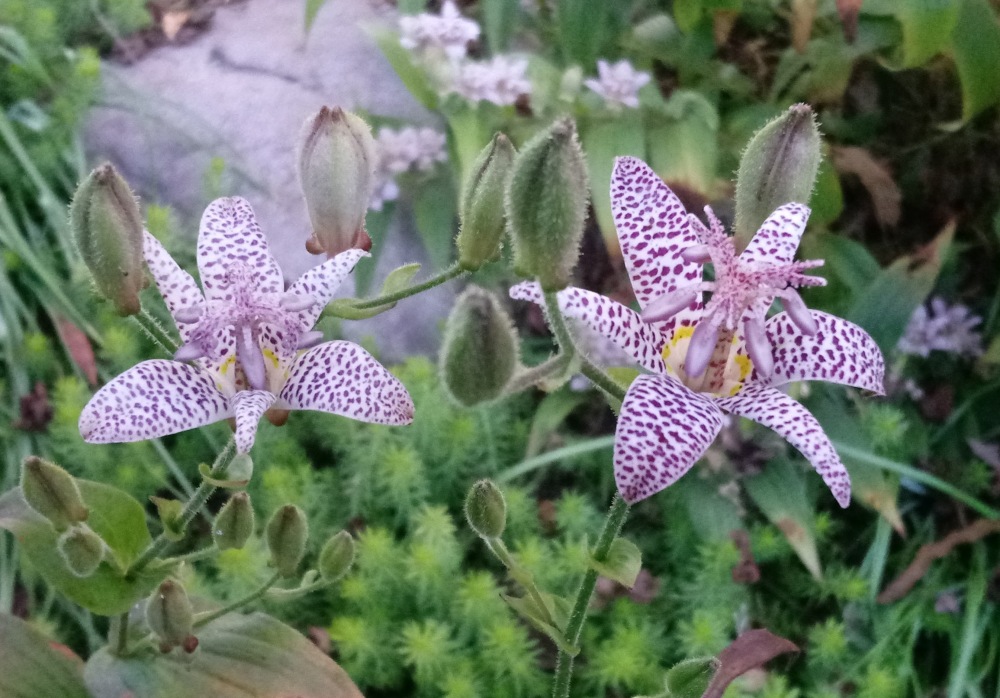
As a bonus, this toad lily arrived in flower, with a few unopened buds still to go. The plant was stocky, and though the pot was small it was full of roots, so I should not have to be overly attentive through the current spell of dry weather. I’m hesitant to purchase plants in small pots through mail order, though I often have little choice to expand collections of less common varieties. I’ve never seen toad lilies besides the few basics in the garden center, and given their relative lack of popularity, I expect I never will. And, certainly not a yellow or any of the other uncommon cultivars I’ve planted, to my great delight.

As is usually the case, I had no idea where the new toad lily would be planted, but figured that I’d work it out once it and another one arrived. (I don’t recall what the second toad lily is supposed to do, and why I added it. Perhaps it was a tall grower, or maybe very short.) I was discouraged after a few circles around the sunnier parts of the garden, but finally decided on what I think will be an ideal spot along the back side of the koi pond. Another toad lily a few paces into damper ground grows vigorously, perhaps too vigorously so that it flops. The sunlight exposure is similar, so I’m expecting the best. After multiple failures with yellow flowered toad lilies, I’ll be overjoyed to finally have one succeed, and I think I’ve done it this time.
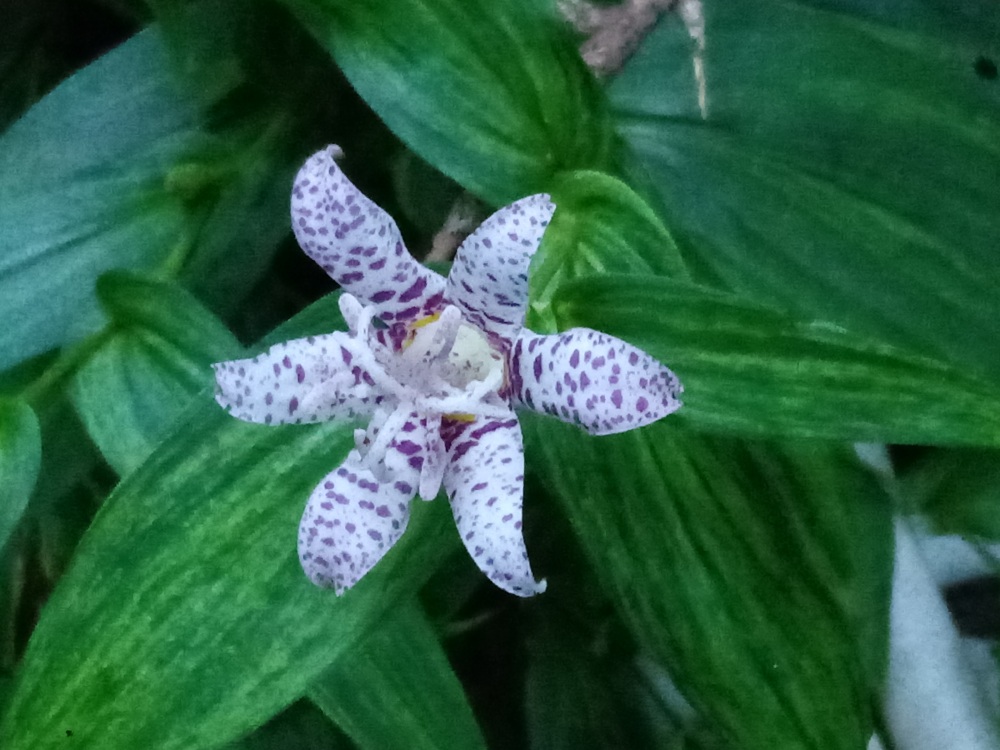
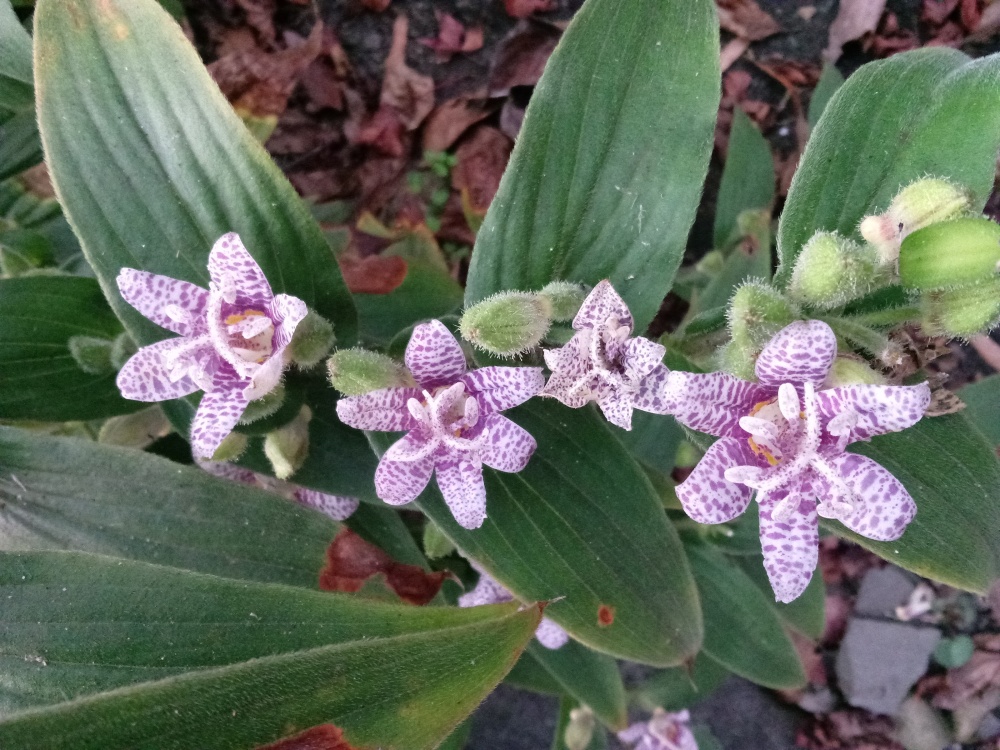
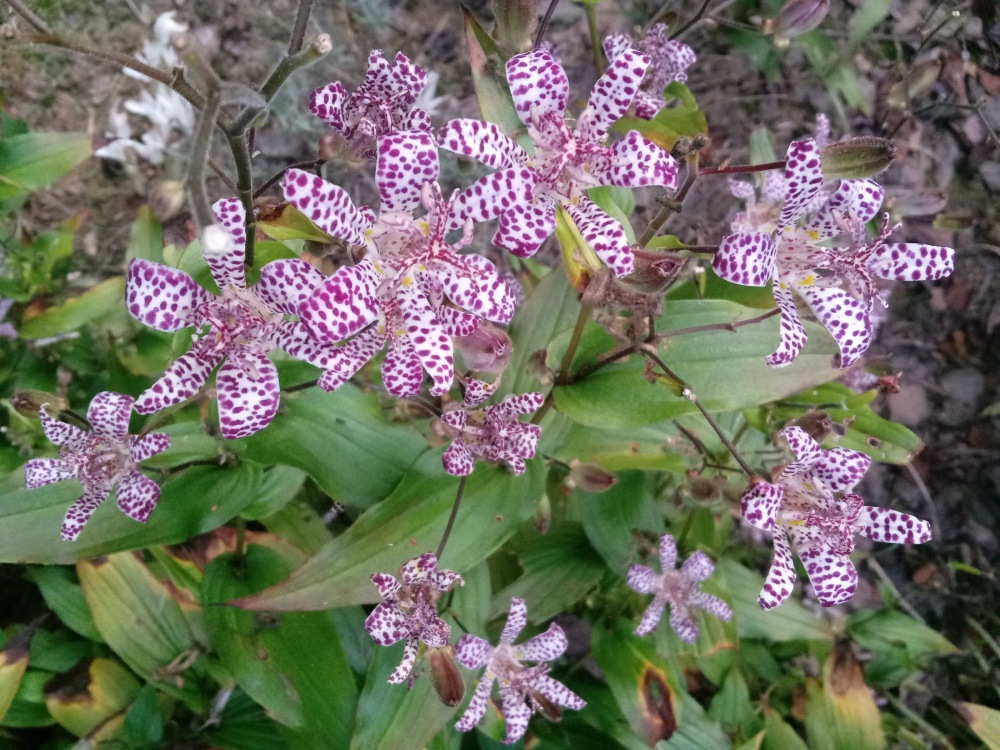

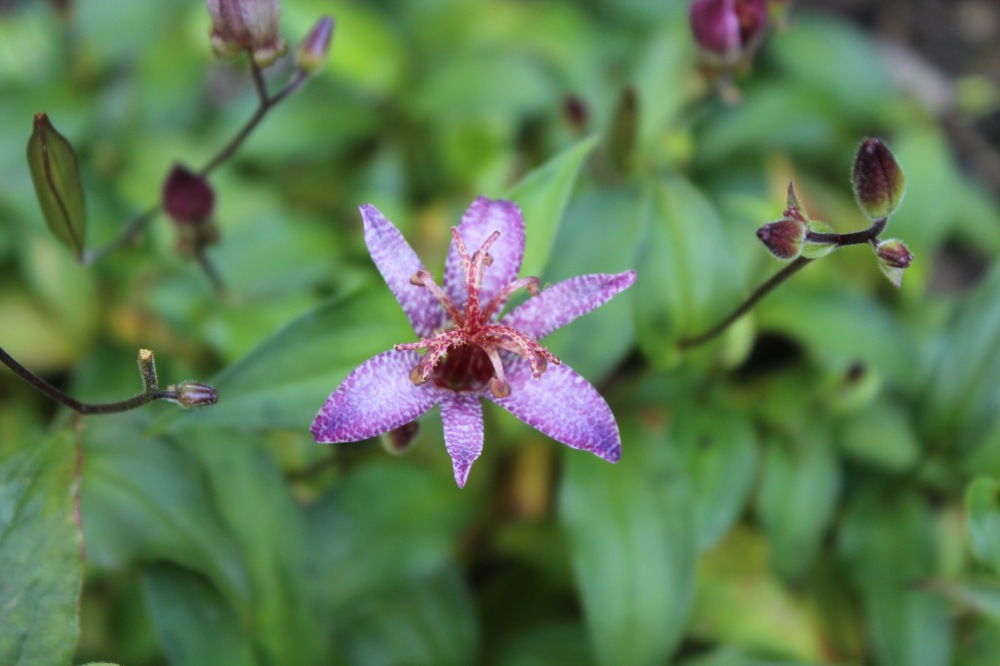
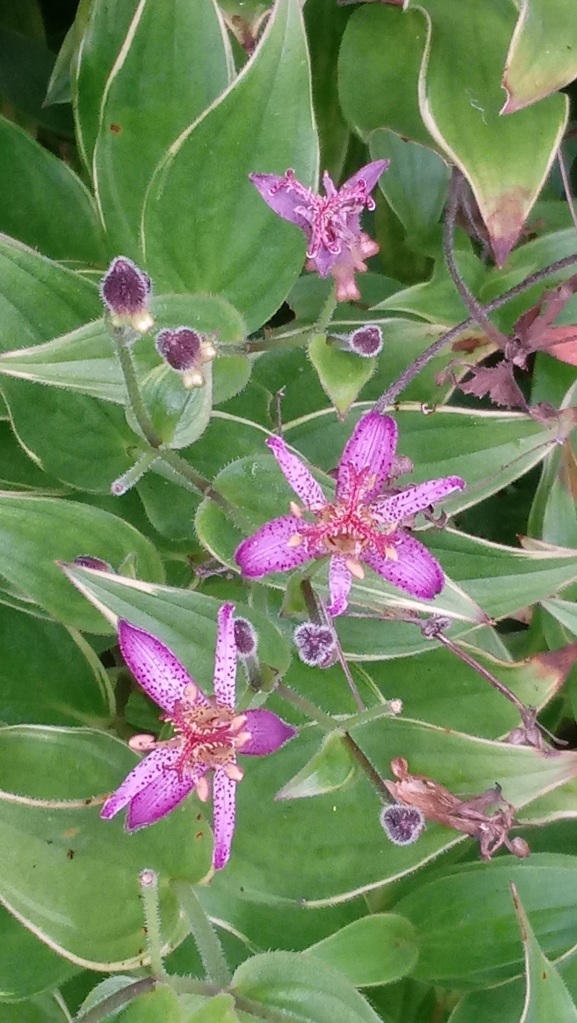
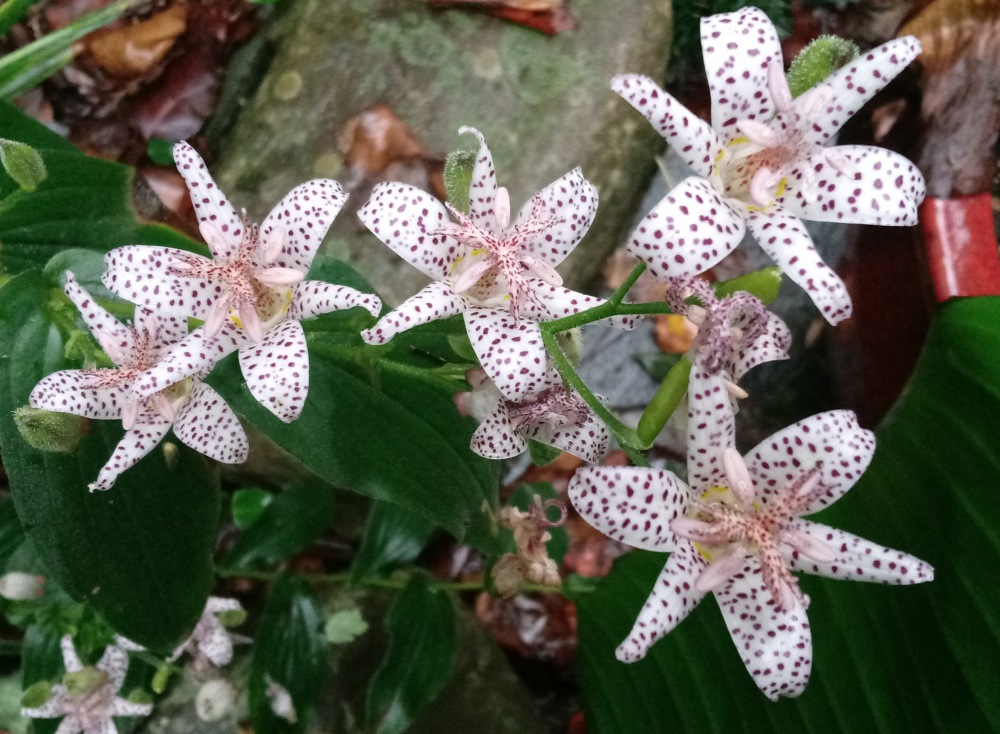
Good luck with the yellow one. It is surprisingly sparsely speckled. That’s a good tongue twister!
So far, so good. Our spell of dry weather has ended, so I don’t expect problems from here. The flowers are far less spotted than most other toad lilies, but the leaves are more spotted.
beautiful flowers!